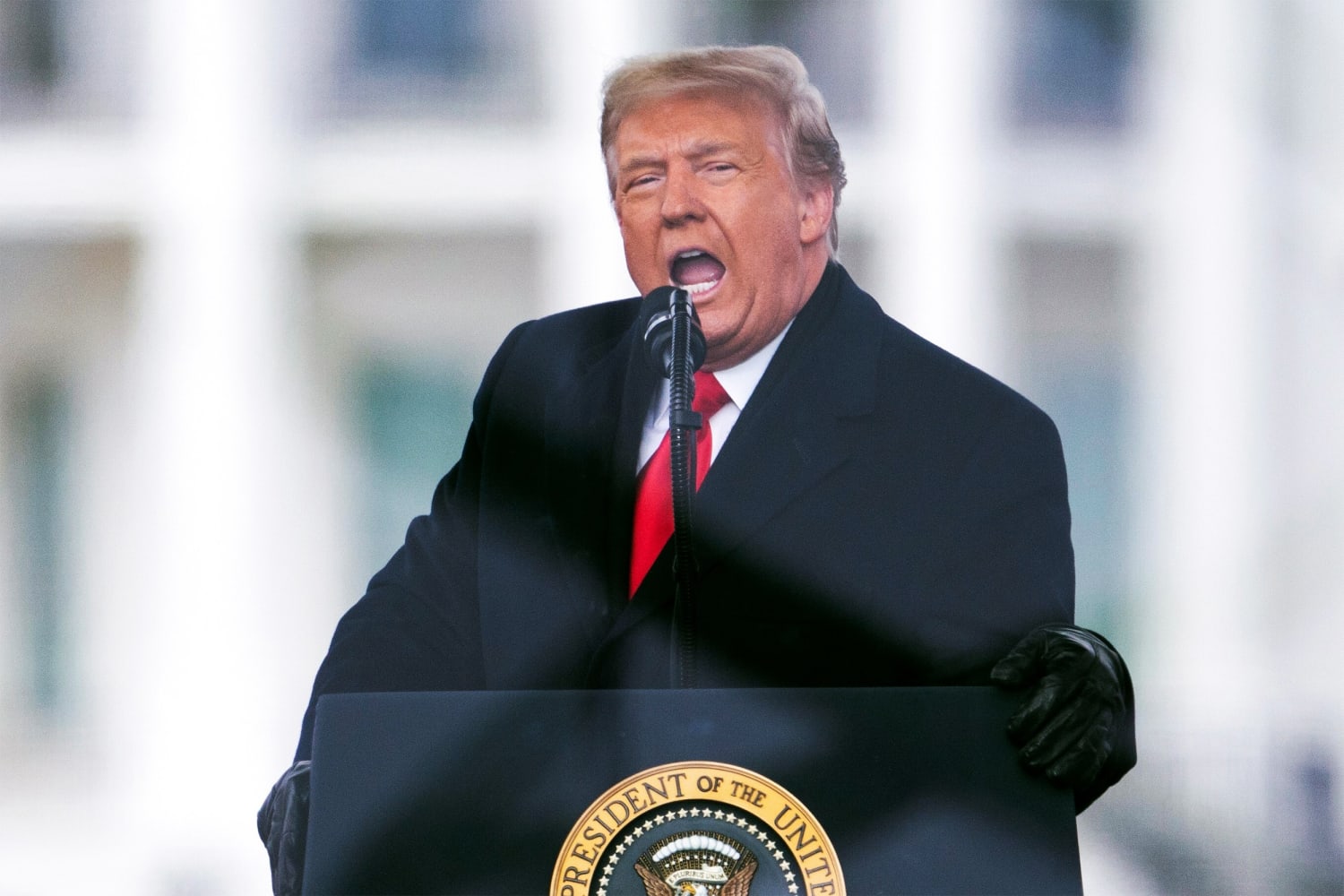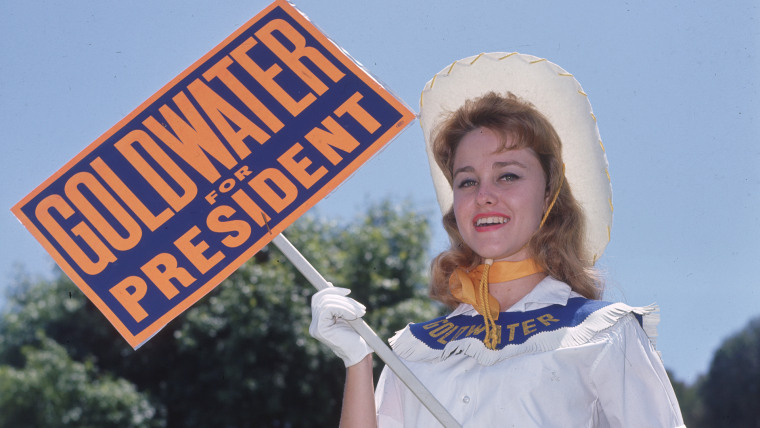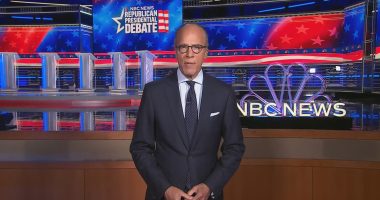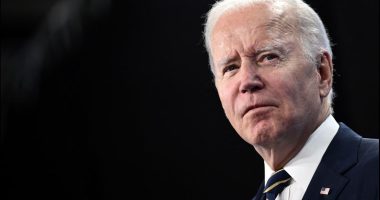This piece has been adapted from “American Psychosis: A Historical Investigation of How the Republican Party Went Crazy,” by David Corn.
Nelson Rockefeller stared into a sea of hate.
Standing at the podium of the Republican National Convention of 1964, the 56-year-old patrician politician who symbolized dynastic American power and wealth was enveloped by waves of anger emanating from the party faithful. Delegates and activists assembled in the Cow Palace on the outskirts of San Francisco hurled boos and catcalls at the New York governor.
He was the enemy. His crime: representing the liberal Republican establishment that, to the horror of many in the audience, had committed two unpardonable sins. First, in the aftermath of Franklin Delano Roosevelt’s New Deal, these turncoat, weak-kneed Republicans had dared to acknowledge the need for big government programs to address the problems and challenges of an industrialized and urbanized United States. Second, they had accepted the reality that the Cold War of the new nuclear age demanded a nuanced national security policy predicated on a carefully measured combination of confrontation and negotiation.
Rockefeller’s crime: representing the liberal Republican establishment that, to the horror of many in the audience, had committed two unpardonable sins.
Worse, Rockefeller had tried to thwart the hero of the moment: Barry Goldwater, the archconservative senator from Arizona, the libertarian decrier of government, the tough-talking scolder of America’s moral rot, and the hawkish proponent of military might who had advocated the limited use of nuclear arms.
Rockefeller, a grandson of billionaire robber baron John D. Rockefeller, had competed for the presidential nomination against Goldwater, but his campaign had been subsumed by the right wing’s takeover of the party. Still, at this late stage, on July 14, the second night of Goldwater’s coronation, Rockefeller and other moderate Republican dead-enders were praying for a last-minute political miracle that would rescue their party from the conservative fringe — the kooks, as they were widely called. This evening they were taking one final stab at keeping those kooks at bay.
Clenching his square jaw, Rockefeller had hit the stage with an immediate task: to speak in favor of a proposed amendment to the Republican Party platform denouncing extremism, specifically that of the Communist Party, the Ku Klux Klan, and the ultraconservative, red-baiting John Birch Society. The platform committee, controlled by Goldwater loyalists, had rejected this resolution. Yet the moderates hadn’t given up. On the opening night of the convention, Gov. Mark Hatfield of Oregon had declared, “There are bigots in this nation who spew forth their venom of hate. They parade under hundreds of labels, including the Communist Party, the Ku Klux Klan, and the John Birch Society. They must be overcome.”
That was not the predominant sentiment within the Cow Palace. Hatfield was met with a barrage of hisses and boos. He later called the response “frightening” and reflected, “It spoke to me not merely of strong political disagreement, but of a spiteful kind of enmity waiting to be unleashed to destroy anyone seen as the enemy — domestic or foreign.”
The delegates were strident anticommunists — many feared evil reds were subverting the government and the nation’s most revered institutions — and for them, Goldwater was the leader of a do-or-die crusade against leftism. They would eagerly back a resolution reviling commies. And though the Grand Old Party — founded a century earlier by antislavery politicians — was now actively moving to court racist Southern voters opposed to desegregation and civil rights, they might disavow the Klan. But including the John Birch Society in this lineup of extremists to be deplored was a not-subtle-at-all dig at Goldwater and his fanatic followers. Everyone in the room knew what — and who — this resolution was aimed at.
Founded in 1958 by Robert Welch, a onetime candy manufacturer, the John Birch Society was the most prominent exponent of right-wing conspiratorial paranoia. It proselytized that the commies were everywhere, in secret control of the U.S. government and subverting many of America’s most cherished organizations: schools, churches, the media and PTAs. Though many Americans might have looked upon it as a fringe outfit — the kookiest of the kooks — the John Birch Society and its members were mightily assisting the Goldwater effort as volunteers and funders.
The Goldwater zealots in the Cow Palace — a project of FDR’s Works Progress Administration originally built as a livestock pavilion — were sure as hell not going to let Rocky and those establishment Republicans vilify and ostracize this crucial component of the Goldwater coalition.
It was late in the evening when Rockefeller hit the rostrum for his allotted five minutes. As he had walked toward the stage, people threw paper at him.
At least he was now showing the world the true nature of this new Goldwater-bewitched GOP.
As soon as Rockefeller proposed adding the anti-Bircher amendment to the platform, the crowd shouted, “No! No!” A rumbling of boos resounded through the hall. Rockefeller pushed on: “It is essential that this convention repudiate here and now any doctrine —” Another cascade of jeers interrupted him. He smiled and waited for it to subside. At least he was now showing the world the true nature of this new Goldwater-bewitched GOP. In Goldwater’s command center, top campaign aides dispatched a message to their delegates: Knock it off.
A defiant Rockefeller continued, assailing “any doctrinaire militant minority, whether Communist, Ku Klux Klan, or Bircher.” The booing got louder. Rockefeller noted that Eisenhower, addressing the convention two hours earlier, had called on the GOP to reject radicalism of the left and right. He quoted himself — from a speech he had given a year before — warning that the Republican Party “is in real danger of subversion by a radical, well-financed, highly disciplined” minority that was “wholly alien to the sound and honest conservatism.” More boos. He was clearly referring to the Birchers, and he urged his fellow Republicans to heed “this extremist threat” and “its danger to the party.”
As veteran political correspondent Theodore White, who was present, later put it, Rockefeller “was the man who called them kooks, and now, like kooks, they responded to prove his point,” and the “kooks” were “hating and screaming and reveling in their own frenzy.” A call for reasonableness, a plea to spurn the paranoid, irrational, and conspiratorial tenets of the far right — this was not what Goldwater’s people wanted to hear. Some reporters feared Goldwater supporters were about to storm the stage and physically attack the governor.
Maintaining a wry and cocky smile, Rockefeller told the audience, “This is still a free country, ladies and gentlemen,” and he condemned the “infiltration and takeover of established political parties by Communist and Nazi methods.” He added, “Some of you don’t like to hear it … but it’s the truth.” He declared, “The Republican Party must repudiate these people.”
The Republican Party — those then in control of it — thought otherwise. On a voice vote, the nays overwhelmed. “God save the Union,” Sen. Tom Kuchel, a moderate Republican, remarked.
About noon on Jan. 6, 2021, President Donald Trump took the stage at a “Save America” rally on the Ellipse, south of the White House, and surveyed a crowd seething with rage and animated by paranoia. Trump had lost his bid for re-election to former Vice President Joe Biden two months earlier. Yet in the intervening weeks, he had insisted that the results were fraudulent and that he had been denied a second term by a nefarious plot with a global reach.
Trump had long been a purveyor of outlandish conspiracy theories, and, in defeat, he was not going to stop. His volatile presidency had been marked by his never-ending promotion — through tweets and other statements — of dark, misleading, and false claims: The Deep State was out to destroy him. The investigations of Moscow’s attack on the 2016 election were a plot to subvert his presidency. News outlets were an unrelenting enemy conniving to crush him. Trump had painted a Manichean picture of the world for his supporters, asserting an array of sinister forces was bent on sabotaging his presidency. The 2020 election was the latest chapter in this saga, and during this post-election period, Trump had fed the paranoid right and his fellow Republicans outlandishly bogus claims of a stolen election.
Millions of Americans believed him — including many far-right extremists: white supremacists, Christian nationalists (who thought the United States should be identified and organized as a Christian state), neo-Nazis, and adherents of the QAnon conspiracy theory.
Trump had long been a purveyor of outlandish conspiracy theories, and, in defeat, he was not going to stop.
Certainly, among the people gathered for this rally — which was organized by a bevy of right-wing outfits controlled by Trump backers working in close coordination with the White House — were Republicans and Trump supporters who did not identify with QAnoners, Nazis, Christian bigots, and racists. These outraged people simply bought Trump’s guff about a rigged election. But hate and paranoia — nurtured by Trump — pervaded the air. Members of self-styled right-wing militias had come to town ready for action, responding to Trump’s tweet of December 19: “Big protest in D.C. on January 6th. Be there, will be wild!” One of these groups, the Oath Keepers, stashed weaponry at a Comfort Inn outside Washington, should Trump call on them to take up arms. Wearing body armor, they were ready to move in and apprehend members of the Deep State on Trump’s signal. During a campaign debate the previous September, Trump had told the Proud Boys to “stand back and stand by” — and the group saw that as a message from Trump: Wait for my call.
Many in the audience had been primed the previous day during pre-march rallies in different Washington locations. These events featured speakers deemed too extreme by the main rally organizers to share the stage with Trump. At one of these well-attended kick-off events on Capitol Hill, paranoia and conspiracy theory ran rampant. Ali Alexander, who had dubbed himself the leader of the so-called Stop the Steal movement, told the crowd, “We are here to stop a coup that’s going on in our country.” He shouted, “This is our country, one way or another.” He led the audience in chanting, “1776! 1776! 1776!”
The flood of paranoia continued to pour forth at this January 5 event. Joe Flynn, the brother of retired Lt. Gen. Michael Flynn, blasted the “cowards” in the GOP. “Are we going to let them cower to these communists?” he asked. Roger Stone, the longtime underhanded political operative and Trump-whisperer convicted of lying to Congress (whom Trump had recently pardoned), insisted that Democrats and the media were mounting a “psy-op” against America to convince people Biden had won. “This is,” he declared, “a fight for the future of Western civilization as we know it. … It’s a fight between the godly and the godless.” Alan Hostetter, a leader of the Stop the Steal forces in California, proclaimed war was at hand: “We are at war tomorrow. … They need to know we as a people, a hundred million strong, are coming for them. … I will see you all tomorrow at the front lines.” That day, Steve Bannon, Trump’s former chief strategist and still an ardent Trump advocate, proclaimed on his website, “All hell is going to break loose tomorrow. It’s gonna be moving. It’s gonna be quick.”
Top THINK stories on the Jan. 6 aftermath
It was within this highly charged atmosphere that Trump was addressing his supporters and feeding them a toxic brew of baseless charges and doomful suspicion, declaring the existence of the United States was threatened. He warned, “If you don’t fight like hell, you’re not going to have a country anymore.” He gave his irate devotees marching orders: “We’re going to the Capitol, and we’re going to try and give … them the kind of pride and boldness that they need to take back our country.” Trump was directing an armed mob toward Congress. His supporters shouted, “Take the Capitol!”
A line runs from the 1964 convention to Trump’s riot. It’s not a straight line. It has zigged and zagged over the years. But there is a path. For years, the Party of Lincoln had encouraged and cashed in on paranoia, bigotry, and conspiracy theory. Trump took this to a new level, but this was not a new strategy.
More than half a century earlier, Nelson Rockefeller had tried and failed to tame a crowd of Republicans and distance the party from the Birchers and their conspiratorial right-wing swill. Trump, preying on similar conspiratorial sentiments, weaponized the delusions held by his supporters that he had originated and advanced. He was using the hatred, ignorance, and irrationality that gripped millions of Americans to subvert democracy.
There was madness within the mob. These enraged Trumpers lived in a false reality. The election was not stolen. Trump was not battling a secret cabal of pedophiles and cannibals. What they believed was wrong — extremely wrong. Yet facts no longer mattered. They were guided by what Trump adviser Kellyanne Conway once called “alternative facts.” For many of the Capitol Hill assailants, Trump and his paranoia had become a theology. With his false assertions, Trump had engineered a distorted reality — as had all those Republicans who did not refute Trump’s baseless claims about the election. He — and they — had encouraged the spread of this American psychosis.
Excerpted from “American Psychosis: A Historical Investigation of How the Republican Party Went Crazy.” ©2022 David Corn and reprinted by permission from Twelve Books/Hachette Book Group.
Source: | This article originally belongs to Nbcnews.com












